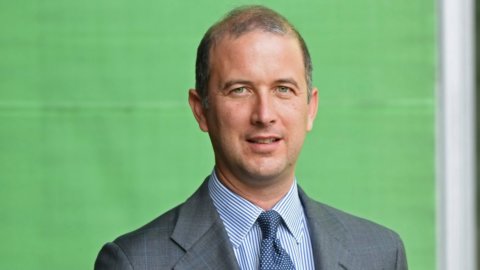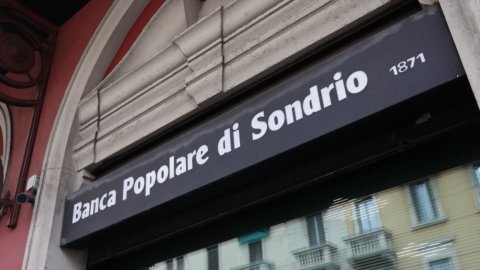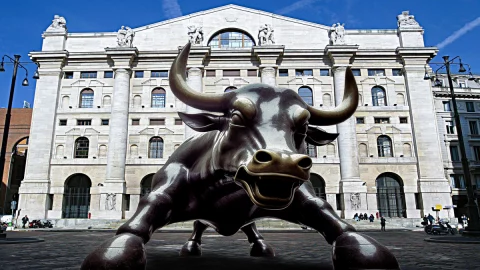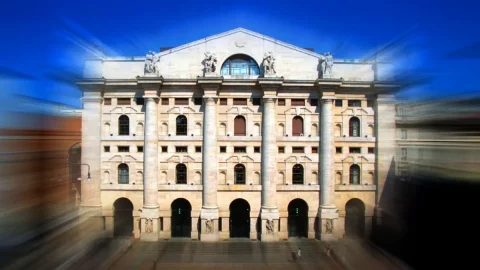The energy of the future will not only be electricity from renewable sources, but gas will also play its part. “Gas – said the CEO of Snam, Marco Alverà, on the occasion of the presentation of the new industrial plan to 2022 which envisages 5,7 billion in investments and a 5% increase in dividends – is no longer only seen as a source of transition but as a pillar of a decarbonised world thanks to the rapid development of renewable gas, as demonstrated by the more than 800 expressions of interest for connection to the grid for biomethane plants in Italy and the new power-to-gas projects in Northern Europe”. The renewable gas sources are precisely biomethane, which is obtained from organic waste and agricultural waste, hydrogen and power to gas, i.e. the transformation of wind and solar energy into synthetic gas. Snam's plan focuses on the plants that will be used to produce clean energy which will then be distributed to homes and, through service stations, to cars, with a specific investment of 200 million (in the context of a total investment of 5,7. 4,8 billion, XNUMX of which dedicated to development, replacement and maintenance of the network). The goal is to reduce methane emissions by 15% in 2022 and 25% in 2025.
The gas-powered car, according to the CEO of Snam, does not conflict with the electric one but goes to intervene where electric mobility will not cover the market and will in any case make it possible to halve CO2 emissions compared to current fuels. “The question of the so-called g-mobility exceeded expectations: in a few years we have passed from 800 to 1.200 natural gas stations throughout Italy and we are working to increase them even more”. Between now and 2030, 280 billion dollars will be invested in hydrogen cars alone worldwide: vehicles will become between 10 and 15 million, with half a million trucks and articulated lorries and 6,5 million homes connected to energy from hydrogen or methane. Only in the construction of production plants for biomethane, Snam will invest 4 million euros over the next 100 years, while the entire investment for the energy transition, understood not only as renewables but also in the set of new technologies, will reach 850 million euros.
INDUSTRIAL PLAN AND TAP CONFIRMED FOR 2020
The other investments in the plan will be dedicated to the grid, for 4,8 billion, and to storage for 700 million. A decisive activity for managing the diversity of seasonal flows with respect to electricity. “And yet production in Europe is declining – says Alverà -: in the future 80 billion cubic meters of gas will be needed to be imported every year, a quantity higher than that of the Italian market alone. This means the need to import and store gas”. Another issue touched upon by the plan is that of the areas from which to import: “We would like to decrease from Russia, while the UK will now import gas from the EU and not vice versa. The South-East corridor, the one that connects with Israel, Egypt, other Asian countries and Turkey, will become decisive”. Corridor that will be guaranteed by the TAP (Trans Adriatic Pipeline), the controversial work that has recently received the go-ahead from the government and which falls within another of the cornerstones of the plan, those of international activities, from which Snam expects to obtain 160 million in 2022: “Regarding TAP, I can say that dialogue with local communities is always important to us and will continue to be so. TAP will bring economic benefits because the diversification of sources will increase, new volumes entering mean lower prices. Now the work has resumed and the work is 80% completed: I confirm that it will be operational in 2020, according to plan. Snam owns 20% of TAP”.
Another key point of the plan is financial profitability, for which Snam has also implemented a cost efficiency plan of 60 million, deriving above all from the reduction of management costs and from optimisation. As for the targets, compared to 2017 they are all growing: expected an increase in Ebitda of an average annual 3,5% over the period of the plan; net profit of more than 4% per annum; in earnings per share (EPS) by more than 5% on average per year in the period, benefiting from the effect of the treasury share buyback program conducted in 2018. The contribution to net income from the Italian and international subsidiaries, the new business in the energy transition and new output-based services is expected to account for over 25% of the total in 2022 compared to around 15% in 2016. The debt/RAB ratio is expected to be substantially stable over the period of the plan. For 2019 alone, Snam expects net profit to grow by around 4% compared to 2018 and a level of debt at the end of the year of approximately 11,7 billion with a cost of debt in line with current levels.
INCREASING DIVIDEND
Snam expects to distribute in 2019, a total coupon of €0,2263 per share and above all estimates an increase of more than 5% per year in the dividend over the course of the plan. Investors really liked this aspect: on Wednesday morning Snam was among the best stocks in Piazza Affari, gaining almost 2% at the end of the morning. The RAB, i.e. the value of regulated assets, is expected to be around €20,4 billion in 2019, while the average annual increase (Cagr) of the consolidated RAB for 2017-2022 is expected to be around 2,5% compared to the 2% of the plan previous with the same calculation methodology. Snam is also entering green finance: 3,2 billion of syndicated credit lines will be transformed into "sustainable loans" and it will be considered whether to turn them into a green bond.
FINANCIAL STATEMENT AS OF SEPTEMBER 2018
Snam has also published the accounts for the first nine months of 2018, which have allowed the company to outperform the targets of the previous plan. Total revenues increased by 1.873 million euros: +56 million euros, +3,1% compared to the first nine months of 2017, thanks to the continuation of the investment plan and the contribution of companies entering the scope of consolidation. Adjusted operating profit amounted to 1.090 million euro (+27 million euro; +2,5% compared to the first nine months of 2017), while adjusted net profit amounted to 793 million euro (+38 million euro; +5,0% compared to the first nine months of 2017). This will allow for beating profit growth estimates for this year, which amounted to 975 million: instead, it will reach 1 billion. Both the growth in revenues and profits derive mainly from the transport business. Technical investments for the nine months amounted to 564 million euros, less than the 683 million euros of the first nine months of 2017). Cash flow was 832 million euros, with net financial debt substantially stable at 11.738 million euros, against 11.550 million euros at December 31, 2017). The exercise also provides for an interim dividend for 2018, set at €0,0905 per share.
In the period January-September of this year, it should be noted the acquisition, for a value of approximately 4 million euro, of 70% of IES Biogas, one of the main Italian companies in the design, construction and management of plants for the production of biogas and biomethane, and on 25 July 2018, for a value of approximately 12,6 million euro, of the business unit dedicated to technological solutions for natural gas filling stations for the automotive industry of MTM, a company of the Westport group Fuel Systems Inc. Snam also purchased treasury shares equal to 2,25% of the share capital, for a total cost of 292 million euros. Operating costs, net of components offset in revenues, amounted to a total of 277 million euros, a slight increase compared to the first nine months of 2017 (-5 million euros; equal to 1,8%). It will be the task of the next plan, as announced, to reduce them.





